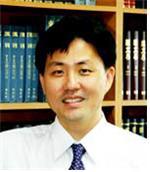Imagining the Dual City in Colonial Korea (1910-1945)
| Michael Kim | |

| |
| Name in Latin Alphabet: | Michael Kim |
|---|---|
| Nationality: | USA |
| Affiliation: | Yonsei University |
강연 소개
Without question, the city is one of the hallmarks of the modern era, for urban spaces are where the transformations of global modernity manifest themselves in their most distinct and palpable forms. Numerous studies have of course traced the importance of modern cities like Paris , Berlin , and Shanghai yet few comparable works exist for Seoul in the English language. Yet the history of Seoul stands apart from many urban centers in the West, because for 35 years it had been a city under colonial occupation. Thus an examination of the colonial city of Seoul can reveal a wealth of issues related to notions of the modern and the colonial. A myriad of questions pertaining to colonial Seoul await further investigation and this presentation is simply one part of a much longer project to excavate Seoul's colonial legacy.
This presentation will focus on key aspects of the everyday life experiences within the colonial city. One of the central features of colonial Seoul was its division into a Korean district and a Japanese district that had considerable disparity in terms of urban development. This dual transformation of Seoul led its residents to redefine their urban spaces and collective identities according to ethnic lines. Colonial Seoul is a particularly important site for exploration, because this was the location where many Koreans encountered both a colonial reality and a nascent capitalist modernity in their most palpable forms. Koreans living in the countryside could live their entire lives with little evidence of the Japanese presence. Many parts of Korea remained isolated from development and experienced hardly any changes throughout the Japanese occupation. However, the Korean residents of Seoul were acutely aware of the transformations that took place within the capital city, which was a major showcase of the Japanese empire, and the shifting urban landscape influenced their collective identities as colonized subjects. There is a need to consider how the urban landscape impacted individual identities and generated collective impressions among the Koreans of the period. Through images and various Korean voices from the colonial past, this presentation will attempt to contextualize the colonial transformation of Seoul and explore what insights the process might have for the rapid urban changes taking place around the world today.
강연 영상
Imagining the Dual City in Colonial Korea (1910-1945)